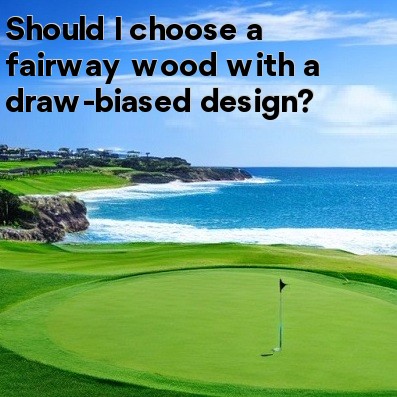
Should I choose a fairway wood with a draw-biased design?
Golfers often face the dilemma of choosing the right equipment to enhance their game. When it comes to fairway woods, specifically, one may wonder if a draw-biased design is the way to go.
What is a draw-biased fairway wood?
A draw-biased fairway wood is designed to help golfers who tend to hit the ball with a fade or a slice. The term 'draw-biased' indicates that the club is engineered to counteract any slicing tendencies, promoting a more controlled and consistent shot shape characterized by a gentle draw.
The advantages of a draw-biased design
There are several advantages to using a fairway wood with a draw-biased design:
- Reduced slice: One of the primary benefits is the reduction in slicing the golf ball. The draw bias encourages the ball to start on a more forgiving line, minimizing the chances of a slice.
- Increased distance: Draw-biased fairway woods often feature weight distribution that helps generate more power and speed through impact. This, in turn, can lead to increased distance off the tee or from the fairway.
- Straighter shots: Golfers who struggle with consistency or tend to miss shots to the right (for right-handed golfers) can benefit from a draw-biased design. The club's design can help square the clubface at impact, resulting in straighter shots.
- Improved confidence: Knowing that you have a club designed to help you reduce your slicing tendencies can boost your confidence on the course. This mental advantage can have a positive impact on your overall performance.
Considerations before choosing a draw-biased fairway wood
While a draw-biased fairway wood can offer numerous advantages, it's essential to consider a few factors before making your decision:
- Swing characteristics: Understanding your swing tendencies is crucial. If you naturally hit the ball with a draw or a hook, a draw-biased fairway wood may not be the best choice for you as it could exaggerate your draw and make your shots harder to control.
- Personal preference: Every golfer has a unique playing style, and personal preference plays a significant role. If you prefer working the ball both ways or have already developed a reliable shot shape, you might not require a draw-biased fairway wood.
- Club adjustability: Some fairway woods come with adjustable weighting options that allow you to customize the club's bias. This versatility can be valuable for golfers who want to fine-tune their shot shape based on specific course conditions or shot requirements.
Conclusion
Choosing a fairway wood with a draw-biased design can be advantageous for golfers struggling with a fade or a slice. The reduction in slicing tendencies, potential for increased distance, and improved shot consistency are all attractive attributes. However, it's crucial to assess your swing characteristics, personal preferences, and the adjustability options of the club before making a final decision.
Ultimately, finding the right fairway wood involves a combination of testing different clubs, seeking professional advice, and understanding your own game. Experimentation and practice will help you determine the perfect club to enhance your performance on the golf course.





